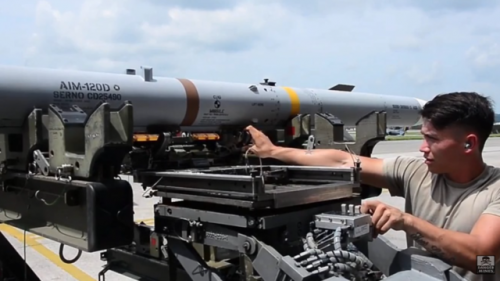bring_it_on
I really should change my personal text
- Joined
- 4 July 2013
- Messages
- 3,661
- Reaction score
- 3,800
I don't think there has been a slow pace at all. The JDRADM, DRADM-T, SITES ,NGM etc (actually the warhead portion is probably directly related to longer range, besides lethality) efforts were ambitious, and timely in order to get something significantly more capably than the AMRAAM/HARM by 2020. Those were 'deliberately' cut since their absence was deemed as an acceptable risk going forward. I don't agree with some of those decisions but I don't blame them for dragging their feet but something has to give when you are spending the kind of money in OCO, and have the Budget Control Act piled on top of it.
However the RAMJET, vs no RAMJET debate is nothing new and I believe they are well within the trade space to seek to improve the speed and shorten the engagement time. There are multiple ways to get longer range, with dual or multi pulse motors being something that has been tried on other programs. Ultimately, there are other considerations such as targeting and getting good quality targeting at long range and those are going to be far bigger challenges when the PAKFA's, J-20's and low-RCS UCAV's and bombers proliferate. How to get the missile to fly out at longer distances, with higher end game performance is actually a reasonably low-risk challenge for them to overcome.
There are different considerations. Its just not the missile, its also the platform, the network, the situational awareness and EW that all feed into superiority in the air. Your spending naturally needs to be balanced and if you are going to spend heavily in certain areas you must take risk in others. Recapitalizing the fighter fleet, and developing a robust EW strategy is probably a much more pressing need.
However the RAMJET, vs no RAMJET debate is nothing new and I believe they are well within the trade space to seek to improve the speed and shorten the engagement time. There are multiple ways to get longer range, with dual or multi pulse motors being something that has been tried on other programs. Ultimately, there are other considerations such as targeting and getting good quality targeting at long range and those are going to be far bigger challenges when the PAKFA's, J-20's and low-RCS UCAV's and bombers proliferate. How to get the missile to fly out at longer distances, with higher end game performance is actually a reasonably low-risk challenge for them to overcome.
The reduced initial acceleration of ramjet assisted designs hasn't deterred the Europeans, Russians, or Chinese from actively investing in such missiles.
There are different considerations. Its just not the missile, its also the platform, the network, the situational awareness and EW that all feed into superiority in the air. Your spending naturally needs to be balanced and if you are going to spend heavily in certain areas you must take risk in others. Recapitalizing the fighter fleet, and developing a robust EW strategy is probably a much more pressing need.




















![NspclvP[1].png](/data/attachments/148/148251-7cd805b9d119dbdb34b2463605618db1.jpg)
![Ql3tmmi[1].png](/data/attachments/148/148252-88549d3abcb958f56adf4db3e741f33a.jpg)